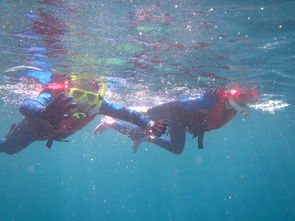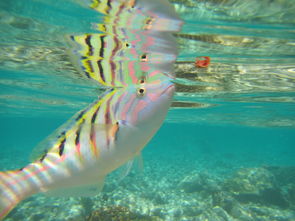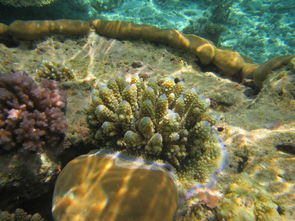Fringing Reef: A Diverse and Intricate Marine Ecosystem
Fringing reefs are a fascinating and complex type of coral reef that play a crucial role in marine ecosystems. Located just offshore, these reefs are a sight to behold and a haven for countless marine species. In this article, we will delve into the various aspects of fringing reefs, exploring their formation, structure, inhabitants, and ecological importance.
Formation and Structure

Fringing reefs are formed by the gradual accumulation of coral fragments and sediments over time. They are typically found in shallow waters, with depths ranging from a few meters to about 20 meters. The structure of a fringing reef is characterized by a series of coral structures, including coral heads, ridges, and lagoons.
Table 1: Key Features of Fringing Reefs
| Feature | Description |
|---|---|
| Formation | Gradual accumulation of coral fragments and sediments |
| Depth | Shallow waters, typically 0-20 meters |
| Structure | Coral heads, ridges, and lagoons |
Inhabitants

Fringing reefs are home to a diverse array of marine species, including fish, invertebrates, and plants. The rich biodiversity of these reefs is a result of the complex interactions between the various organisms that inhabit them.
One of the most notable inhabitants of fringing reefs is the coral itself. Corals are tiny marine invertebrates that form the foundation of the reef ecosystem. They are responsible for creating the intricate structures that support the entire reef community.
Table 2: Common Inhabitants of Fringing Reefs
| Species | Category |
|---|---|
| Clownfish | Fish |
| Sea Urchin | Invertebrate |
| Sea Cucumber | Invertebrate |
| Sea Grass | Plant |
Ecosystem Services

Fringing reefs provide a multitude of ecosystem services that are essential for the well-being of coastal communities and the environment. Some of these services include:
-
Protection from storms and erosion
-
Food and livelihood for coastal communities
-
Recreation and tourism opportunities
-
Carbon storage and climate regulation
Threats and Conservation
Despite their ecological importance, fringing reefs face numerous threats, including climate change, pollution, and overfishing. These threats have led to a significant decline in the health and biodiversity of many fringing reefs worldwide.
Efforts are being made to conserve these valuable ecosystems, including the establishment of marine protected areas, the implementation of sustainable fishing practices, and the reduction of pollution.
In conclusion, fringing reefs are a diverse and intricate marine ecosystem that plays a crucial role in the health of our planet. By understanding their formation, structure, inhabitants, and ecological importance, we can better appreciate the value of these unique habitats and work towards their conservation.